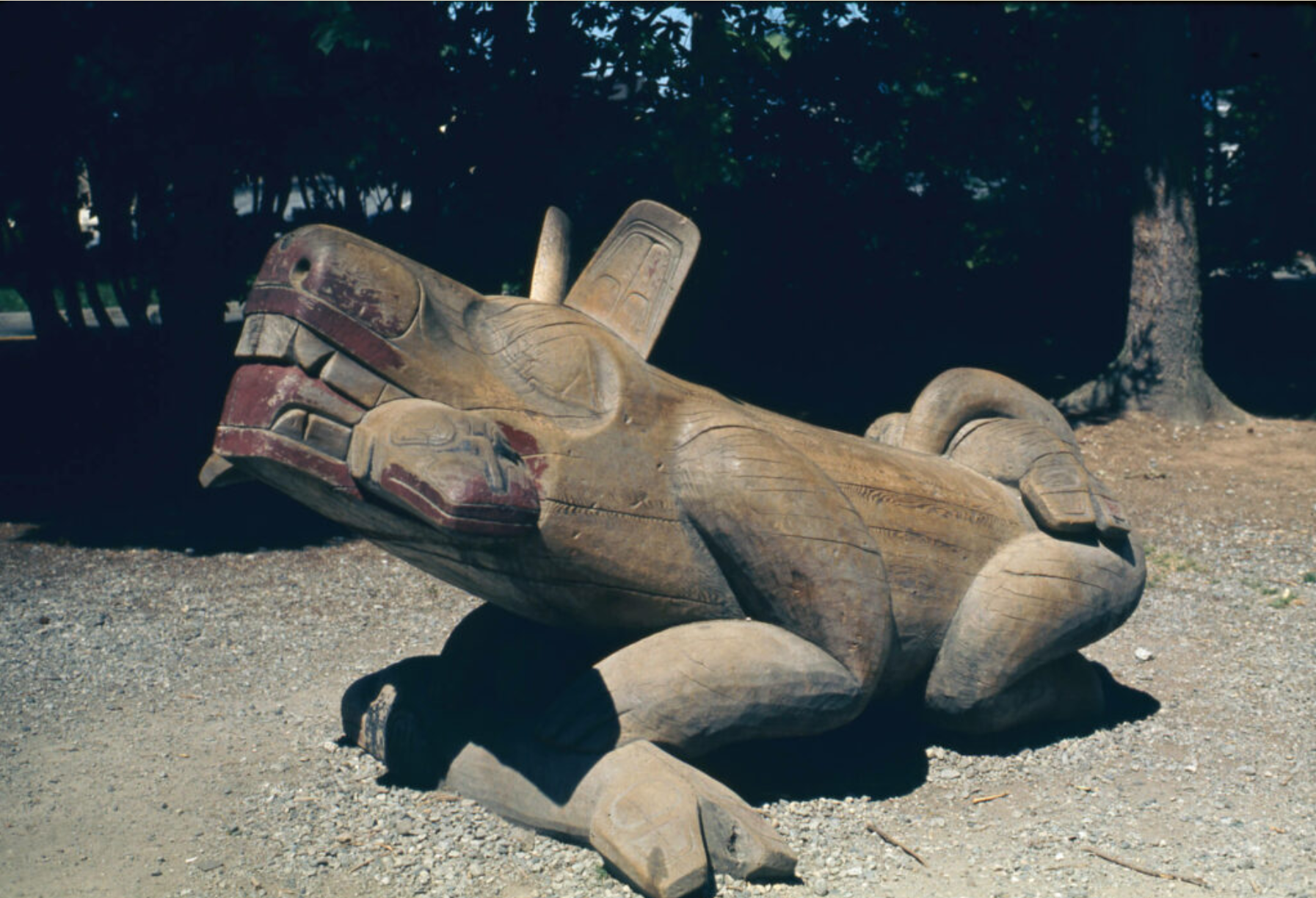Iljuwas Bill Reid, “Bear” and other works (British Columbia)
This picture of “Bear” was taken from a vacation slide found on eBay.
In addition to his woodcarvings, Reid was also a skilled metalworker. His contributions to the British Columbia Pavilion included “a gold jewel box, gold bracelets, a gold and abalone shell brooch and earrings set and a silver box with a dimensional bird carving on its argyllite lid.” (Image from Art Institute Canada.)
Iljuwas Bill Reid was a Haida artist born in Victoria, British Columbia. Like Joe David, he played a significant role in the revival of Northwest Indigenous art. His “Bear” was one of several Canadian sculptures that graced Canada Island during the fair. It is part of the permanent collection of the University of British Columbia since 1963, and resides there today.
Several other of Reid’s works also appeared on Canada Island, including a carved screen and the burial poles that decorated the entrance. The poles, used to a more humid climate, were given a sprayer in June of 1974 to prevent them from splitting in the dry heat of a Spokane summer. Mortuary poles or burial poles are a specific form of totem pole that honors a prominent deceased person and have a place on the top where their remains (generally ashes) can be stored.
Reid’s work was rooted in the Haida tradition, but he did not simply create replicas of pieces from the past. He should be understood as a 20th-century artist who was in conversation with the artists and art movements of his era, a Canadian artist whose connection with his mother’s cultural traditions was only part of what made his art unique and influential.
Reid passed away in 1998. More about his life and work can be found here:
Reid’s carvings appeared at the entrance of Canada Island.
Reid’s screen carved from cedar (1968) also appeared in the British Columbia Pavilion. Image from Art Canada Institute.
Seawolf also appeared on Canada Island, although this photo is not from Expo ‘74. Originally commissioned by the University of British Columbia and carved in 1961-1962, it was acquired by the UBC Museum of Archaeology in 1978. Image from Art Canada Institute.
A photographer used the Seawolf sculpture’s nose and ears to frame Joe David and Frank Charlie at work on the Hamatsa Spirit totem pole.









